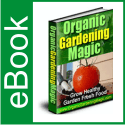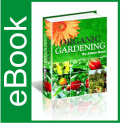Learning How to Plant a Vegetable Garden Can be Fun.
Learning How to Plant a Vegetable Garden Can be Fun.
Article by Andrew Bicknell
Learning how to plant a vegetable garden is not hard, but without careful planning and proper follow through, your garden may perform poorly. If done correctly it pays off with big benefits in so many ways. Before you know it you will be picking perfectly ripe, perfectly delicious tomatoes without having to wonder what chemicals went into growing them.
The most important part of successful gardening is to properly prepare the soil. A routine soil test gives information on any lime requirement, phosphorous and potassium needs and estimated nitrogen requirements. A good soil mixture contains two parts loam, one parts and, and one part organic matter and many pre-mixed soil mixtures are available at garden centers. When manure is added to the soil, it must be composted prior to planting, because fresh, hot manure will also burn your plants. Vegetables need a lot of nutrition to grow well, so the better you prepare the soil before planting, the better chances you have of producing a bountiful crop. For information on soil testing, call your local county extension educator or the local university soil testing laboratory.
Planting a vegetable garden is not hard, but without careful planning and proper follow through, your garden may perform poorly. Tilling the soil in late fall facilitates earlier spring planting. Cool versus warm planting periods are determined by your choice of cool-season vegetables and warm-season vegetables.
Successful vegetable gardening involves far more than just popping a few seeds into the ground and waiting for a tomato to appear. When sowing your seeds stretch a string between the two stakes you set to mark the row, or use a straight piece of lumber, and use it as a guide to open a ‘V’ shaped furrow with the corner of your hoe. Tear the corner of the seed package off and use your finger to tap the package lightly as you move down the row, carefully distributing the seeds evenly. Larger type seeds may be placed individually in the row. You will want to plant extra seeds in each row to allow for failed germination, and for thinning. Cover the seeds with fine soil (no clods or rocks). After the seeds sprout, the weaker seedlings should be pinched off to give the rest enough room to grow.
Vegetables that are leaves or stems, such as cabbages and onions, can usually be harvested over a long period as they are needed. Vegetables that are the fruit of the plant, such as peas, beans and tomatoes, should be picked every two or three days to get them when they are first ripe. Any vegetable garden should receive a minimum of six hours of direct sunlight during the day and grow best on soil that is well drained. Vegetable gardens do not always have to be laid out in large plots in the backyard; you can grow them nearly anywhere as long as all their growing conditions are met and your choice of plants will be largely determined by the likes and dislikes of your family. If the same garden plot is used for vegetables for many years, your crops should be rotated, so that each type of vegetable is in a different position during the following season.
Planting a vegetable garden is hard work but for both the beginner and experienced gardener the rewards can be delicious.
About the Author
To learn more about planting and maintaining a vegetable garden please visit the website Garden-Choices-Net.com.

 November 18, 2011
November 18, 2011 







